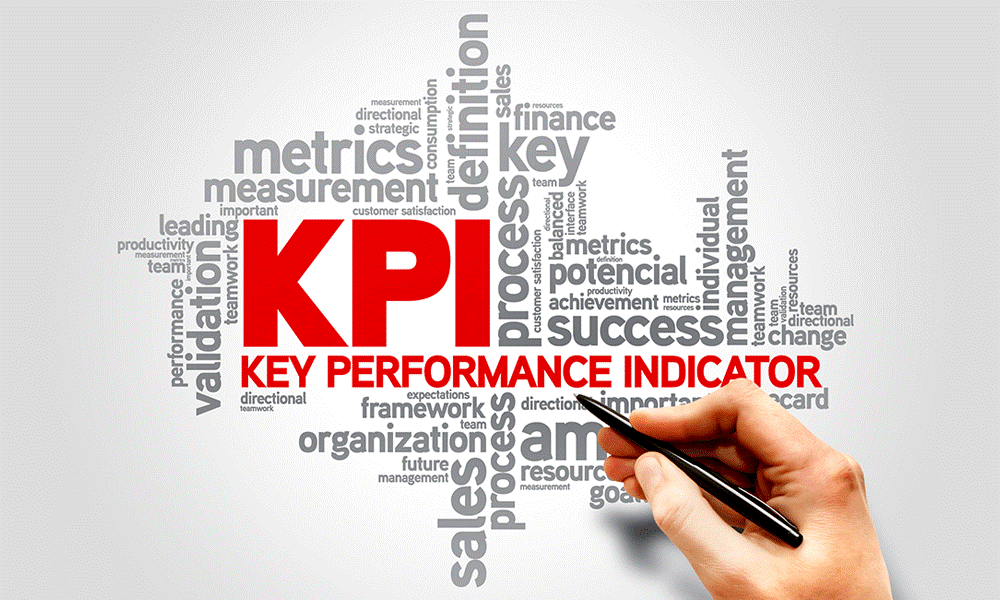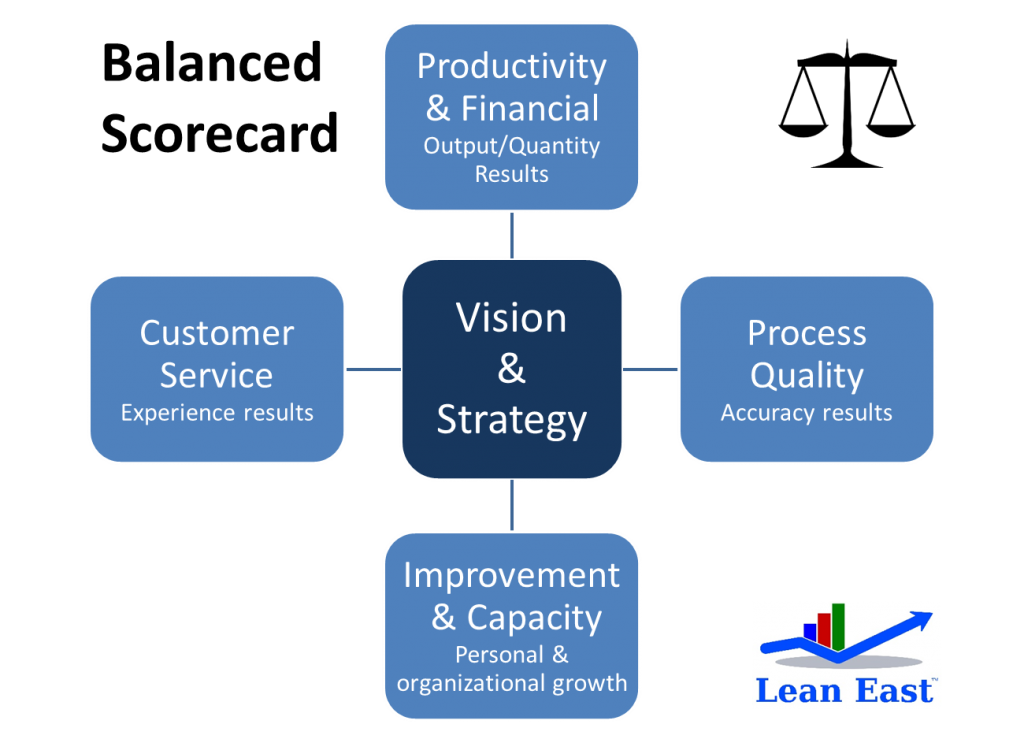Key performance indicators (KPIs) are the vital few metrics that define the success or failure of a process. KPIs vary based on the process being studied and the definitions of success for the process. Good organizations understand their KPIs. Better organizations measure them. The best organizations seek to improve them every day. Read on to learn about Key Performance Indicators and how a team or department can use a balanced scorecard of KPIs to support improvement.

The initial challenge with KPIs is selecting them properly from the many possible performance indicators available. The second challenge is determining how to measure and share them throughout the organization. Our team has helped numerous organizations establish and measure KPIs. Here are some highlights from the Lean East training module covering the selection and measurement of Key Performance Indicators.
Key Performance Indicators Defined
First, we begin by breaking down the three words: Key, Performance, and Indicator. An indicator is not the same as an outcome. For example, if a team’s goal is to produce 500 units for the year, this is an average of about 10 units per week or two per business day. Therefore, a process that produces two units per day, every business day, would achieve the goal. This is a simple output KPI that if not regularly met will fail to achieve your overall goal.
Performance is based on customer value. What parameters does the customer care about? Customers typically want the lowest cost, highest quality, and the best service and delivery with flexible terms. The organization needs to do this safely and profitably while maintaining a sustainable work environment. If nobody cares about your measurement (customers or leaders/shareholders), then don’t track it!
Key refers to what metrics are most important to the organization based on the vision and strategy set by leadership. A team can only balance a few metrics without losing focus on what is most important. However, too often we see teams confused by tracking 15-20 “important” metrics. If every metric is important, no metric is more important. We recommend a balanced scorecard of 4-5 KPIs. For example, balancing a productivity KPI with a quality KPI ensures that improving your output doesn’t impact the quality of the work.

Balanced Scorecard Key Performance Indicators (KPIs)
There is no set rule for how many KPIs to select and what measures to balance. However, it is typical to identify indicators in four areas:
- Productivity and Financial – this is the output metric – how can we sell more, produce more, make more money, process more, etc. All organizations have some measures for the bottom-line financial and output results.
- Customer Service – these are externally focused metrics that ask, “What do our customers think about our organization?” While productivity metrics tend to be about output, service metrics consider the customer experience. Was the product or service delivered on time? What was my experience dealing with the organization?
- Process Quality – an internally focused metric that looks at the quality and accuracy of the product or service and the efficiency of the processes.
- Organizational Capacity, Improvement, and Growth – Are we getting better as individuals and as an organization? Is our capability for producing quality services with a smile increasing or decreasing? If we never slow down to “sharpen the saw,” how will we maintain an advantage in the marketplace?
Balanced scorecards can help teams improve in multiple (and sometimes opposing) focus areas. If you push people (or machines) harder and harder will you begin to suffer from poor quality or breakdown that impacts output or service? Is it okay to take longer to satisfy a customer need at the expense of productivity? Does making short-term productivity goals create a stressed-out staff that experiences burn-out or may even quit their job? A good organization will balance KPIs in all these areas to ensure success in one area doesn’t cause issues on another indicator.
Establishing Key Performance Indicators (KPIs)
We recommend teams identify their own KPIs. Defining performance is a great exercise for team growth and an opportunity to communicate outcome goals. Ensure that KPIs selected are those that the team can control. For example, “number of claims processed” may depend on customers submitting claims to be processed. Instead, measure “time to process a claim,” a metric more under the team’s control. KPIs need to be important to the organization and measured without significant cost. Measuring a KPI should not be painful! Be able to show how the KPI changes from period to period in a trend chart. Shorter measurement periods are better, i.e. a daily measure is better than a weekly or monthly measure.
KPIs are most important in a continuous improvement culture. Teams that have established a balanced scorecard of key performance indicators can make an improvement and see how it affects their KPIs. Maybe productivity goes up but quality decreases . . . or customers gain flexibility at the expense of performance in a productivity measure. Simplifying complex processes into several KPIs aids in decision-making since the team can evaluate how a decision affects what is most important. Be sure the KPIs promote desired behaviors – people will still do what they are rewarded for, whether the reward is recognition, a feeling of worth or accomplishment, time or money.

KPIs and Lean East
We have helped multiple organizations develop relevant KPIs that follow the above goals. Some of these organizations share their department KPIs with management and peers in a regular tour of operations. One rotating member from each team spends a few moments updating the visitors on their KPIs. This aligns and strengthens the culture in large, complex organizations.

Please connect with the Lean East team for further information about establishing KPIs in your organization. We are happy to answer questions and help the teams in your organization benefit from the power of a balanced scorecard of KPIs.


Related Posts
The Continuing Evolution of the Employee Using AI
10 Great Leadership Lessons from Elon Musk II
10 Great Leadership Lessons from Elon Musk